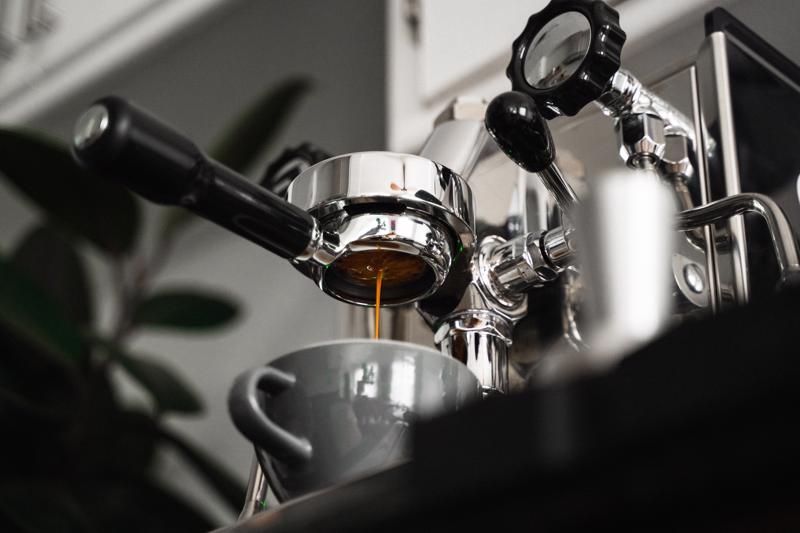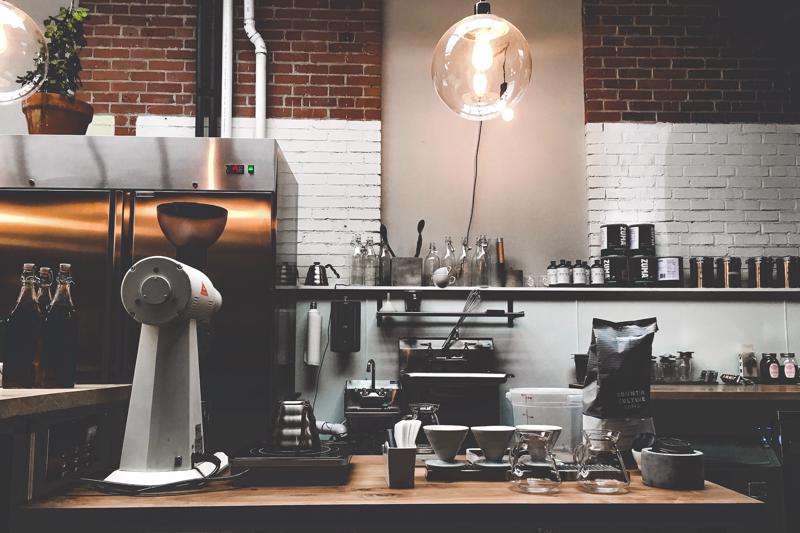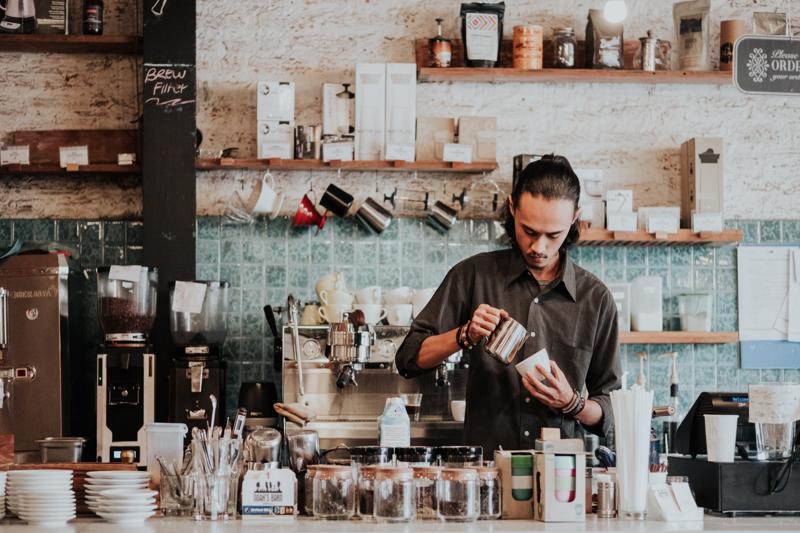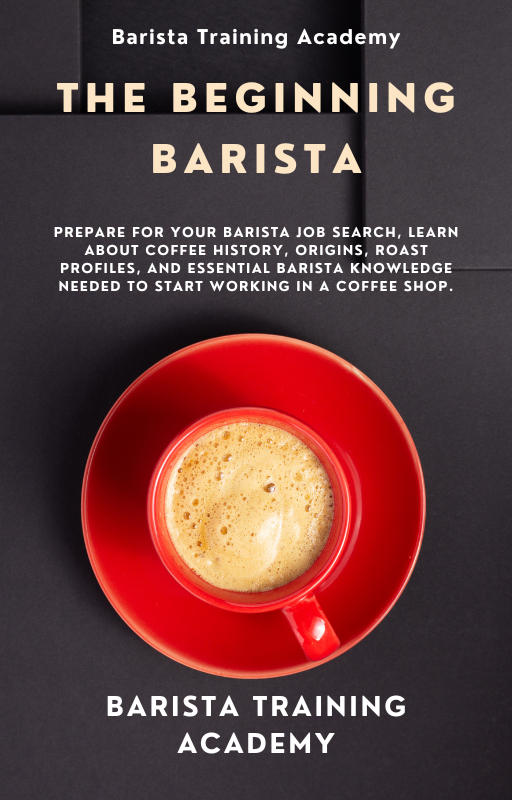Clean Workstation – Happy Customers
One of the central elements of any barista training is keeping your workstation clean and safe. A customer entering your coffee shop wants to see a clean and shiny steam wand – this is the first sign for high-quality drinks and customers’ health.
If a customer enters a café and sees a yellow-brown steam wand, scruffy worktable, and stains on a once shiny espresso machine, they might turn away and leave. And they’ll be right – we’ve talked to customers who had experienced severe stomachache after having had coffee from a dirty espresso machine.
Cleaning the espresso machine after every use and sweeping the barista workstation regularly will help you get rid of any milk or food leftovers that can go bad and spoil the coffee's taste.
Moreover, espresso machine backflushing is “a must” at least two times a day, and a major cleaning is something you finish your night shit with every time.
Maintaining a clean environment will also make it easier for you as a barista to navigate through cups, pitchers, plates, and milk boxes. Just imagine how difficult it is to be efficient if you have all kinds of obstacles on your way when making coffee.

Barista Service Efficiency
Recently, there has been a lot of talk about efficient and ergonomic (minimizing discomfort) coffee shop design.
Coffee shop owners come up with various ideas on how to improve the flow of customers and accelerate operations, for example, by implementing a circular or square workstation design, where you order a coffee on one side, then move along and get your coffee on the other side of a workstation.
At least three different baristas are working on each side: the first takes orders, the second makes coffee, the third is washing and cleaning. Of course, it’s great if a coffee shop can allow it, but not every place can afford such a design or get a building department permit to do so.
We believe that the best way to stay efficient in any barista workspace is to have an organized working area, where the refrigerators are easily accessible without extra bending or walking, the grinders and knock box are located next to the espresso machine, the sinks or dishwashers are at the reasonable distance from a barista.
When you get a barista job, you often can’t change the setting or the layout of a coffee shop. However, you may do a few things that will make your work more effective and ergonomic.
Clean and Organized Makes Your Day Go Smoother
It’s important to introduce a system where every barista tool and piece of equipment has its own place. A coffee shop might have such a system in place, but baristas often change it to make it more convenient for them. You might come with your own system, and that’s ok, as long as it allows you to remember where’s what and spend less time looking for things. When every tool has its place and purpose, you need less decision-making time and less stress.

A Clean Coffee Bar Reduces Injuries
Slips, burns, and accidents are common injuries for baristas. For example, touching a hot steam wand might cause a deep burn and leave a dark mark for a long time. Spilling milk, water, or coffee on the floor can lead to slips and potentially serious injuries or even fractures.
There are a few precautions: if you spill anything on the floor, wipe it right away. It’s also a good idea to have an anti-slip orthopedic mat under your feet, which will also reduce stress from standing for too long.
Putting your tools back after every use will make your workspace more efficient and safe as you won’t stumble upon dirty pitchers, full milk boxes, fragile cups, or plates that might cause a lot of trouble if they fall on the floor.
Health Department Issues
Local county health departments are in charge of preventing food-borne diseases and ensuring labor safety at food establishments. Coffee shops are not an exception. To ensure safety, health departments require a stainless 3-compartment sink, a separate hand washing sink, strict zoning (food prep zone, storage area, customer area, etc.), certain floor and walls covering, sanitizers, a special plumbing system, and many many more.
Of course, as a barista, you might not know it (this is the responsibility of a coffee shop owner). Still, you need to follow basic food handling rules, like washing hands, surfaces, and tools repeatedly, maintaining personal hygiene, holding cups only by the handles, and never touching food with bare hands. Otherwise, local county health departments can, at best, give you a verbal warning (in which case they will sure to be back) and, worst case, shut you down.
Better Customer Experience
Overall confidence in your customer service increases in a clean and organized atmosphere. A hygienic and well-arranged barista workspace boosts your self-confidence and reduces hassle at work. You won’t be distracted by numerous cups, lids, saucers, or milk spills and will be able to focus on better customer service and a light conversation. This will secure larger tips and returning customers – and this is exactly what you want when you work as a barista.

Tips To Increase Efficiency at Your Coffee Shop
Consider the existing space and workflow
When you become a barista and start working in a coffee shop, you want to learn the already established workflow within the existing space. This might fit you, and you won’t have any problems with that. If you notice that some things can be changed to make your workflow even smoother, don’t hesitate to inform your manager about it. You might want to move sauces or tees closer to your workstation so that you don’t have to make extra movements trying to reach for them from far away.
Consider the needs of you and other baristas
The chances are high that you left-handed or will work with left-handed baristas who might need to have a knock box in a different location or have refrigerator doors open from a different side. If a knock box is easy to move, it’s not a big deal – every barista will be able to put it where they need it. It might be more difficult with the refrigerator doors. In such cases, if you are left-handed or if working with a left handed-baristas, we recommend that you separate your duties in a manner that you don’t disturb each other.
If you use a wheelchair, your coffee shop owner or manager should provide you with special wheelchair access, ramps, and other improvements, according to the ADA Act.
Clean up spills and messes as soon as possible
Spills and mess tend to pile up quickly. So make sure you wipe or clean them as fast as possible. As we mentioned above, they might lead to serious injuries and hinder your coffee-making processes.
Reduce waste
Together with your coffee shop manager, strategize, and implement waste-saving processes. This not only makes your coffee shop more eco-friendly but also reduces the chance of mess and disorganization. For example, grind only as much coffee as you will need. Review your inventory every week (your coffee shop POS systems make it easier today to keep track of purchased and sold goods). Try to use recyclable cups, lids, straws, and packaging. Save water but don’t neglect hygiene.
Looking for a job as a barista? Consider our guide for Beginning Baristas.
Our comprehensive guide helps better prepare you for getting a job as a barista. Complete with everything you need to know to get started with your barista training and barista job search.

Brought to you by Barista Training Academy, “The Beginning Barista,” Your Ultimate Prep Guide to Getting Your First Job as a Barista” is an ultimate resource that is available online. It is affordable for anybody who is looking to start a career in the coffee industry. For more information, visit our blog.



